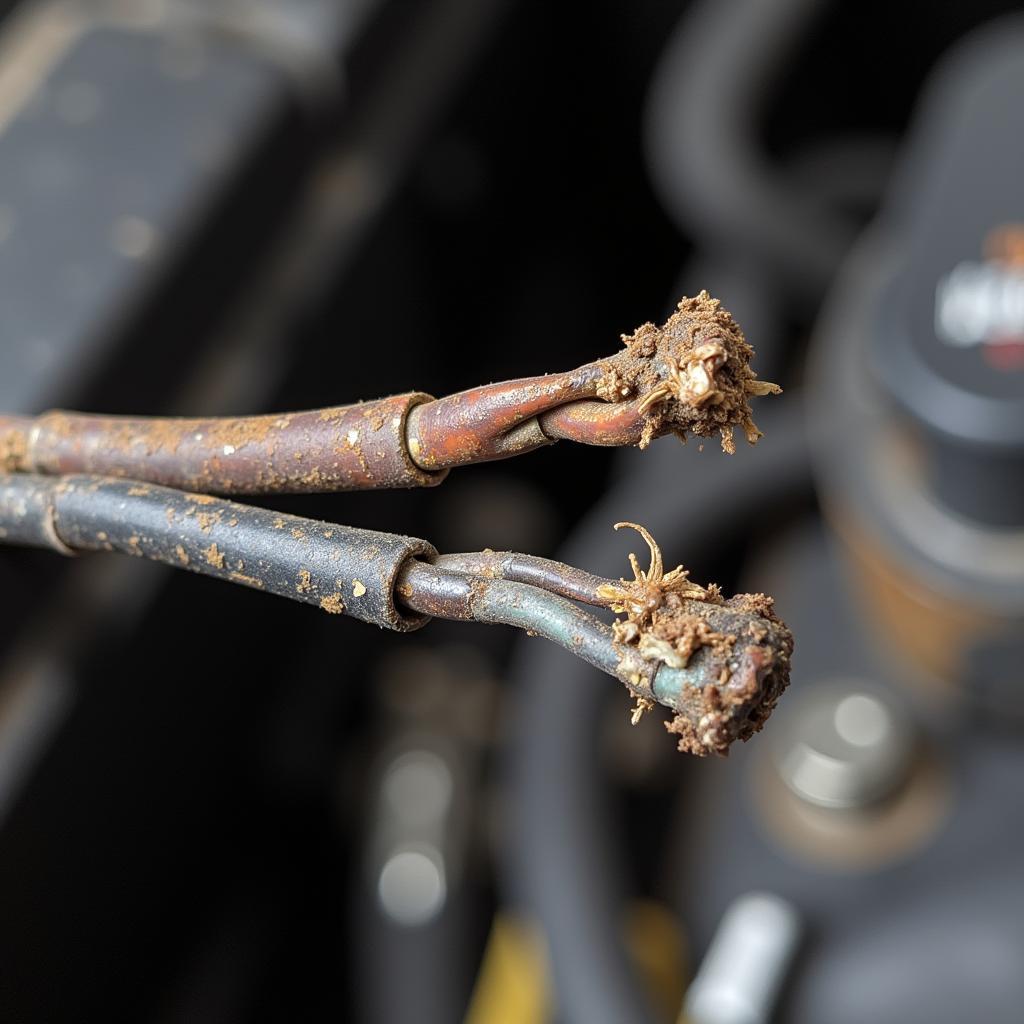The P0138 OBD2 code indicates a problem with the oxygen sensor circuit voltage for Bank 1, Sensor 2. This code means that the powertrain control module (PCM) has detected a voltage reading from the oxygen sensor circuit that is higher than expected.
Understanding Oxygen Sensors and Their Role
Oxygen sensors, also known as O2 sensors, are vital components of your vehicle’s emission control system. They measure the amount of unburned oxygen in the exhaust gases, which helps the PCM adjust the air-to-fuel ratio for optimal engine performance and reduced emissions.
Most modern vehicles have at least two oxygen sensors:
-
Upstream Oxygen Sensor (Sensor 1): Located before the catalytic converter, this sensor primarily monitors the oxygen content in the exhaust gases to help the PCM adjust the air-to-fuel mixture.
-
Downstream Oxygen Sensor (Sensor 2): Located after the catalytic converter, this sensor monitors the efficiency of the catalytic converter by measuring the oxygen content after the exhaust gases have passed through it.
In the P0138 code, “Bank 1” refers to the engine bank containing cylinder #1. “Sensor 2” indicates the downstream oxygen sensor.
Common Causes of a P0138 Code
A high voltage reading in the oxygen sensor circuit can be caused by several factors:
- Faulty Oxygen Sensor: The sensor itself may be damaged or worn out, causing inaccurate voltage readings.
- Exhaust Leaks: Leaks in the exhaust manifold, pipes, or muffler can introduce excess oxygen into the exhaust stream, confusing the oxygen sensor.
- Wiring Issues: Damaged, corroded, or loose wiring in the oxygen sensor circuit can disrupt the voltage signal.
- Faulty PCM: While less common, a malfunctioning PCM can misinterpret sensor data, leading to a false code.
Symptoms of a P0138 Code
Besides the check engine light illuminating on your dashboard, you may experience:
- Decreased Fuel Economy: As the PCM may be unable to optimize the air-to-fuel ratio, your vehicle might consume more fuel.
- Rough Engine Idle: An imbalanced air-to-fuel mixture can cause rough idling and engine misfires.
- Failed Emissions Test: A malfunctioning oxygen sensor can increase emissions, leading to a failed emissions test.
Diagnosing a P0138 Code
Proper diagnosis is crucial before replacing any parts. Here’s a step-by-step approach:
- Read OBD2 Codes: Use an OBD2 scanner to retrieve the stored codes. Note any other codes present, as they might be related.
- Inspect the Oxygen Sensor: Visually inspect the downstream oxygen sensor (Bank 1, Sensor 2) for physical damage, excessive carbon buildup, or loose connections.
- Check for Exhaust Leaks: Examine the exhaust system for leaks, particularly around the sensor’s location.
- Test the Wiring: Use a multimeter to check the voltage and resistance of the oxygen sensor circuit, comparing the readings to the manufacturer’s specifications.
- Inspect the PCM: If other components check out, consider having a qualified mechanic inspect the PCM for faults.
Fixing a P0138 Code
The repair method depends on the diagnosed issue:
- Replace Faulty Oxygen Sensor: If the sensor is damaged or worn out, replace it with a new one compatible with your vehicle’s make and model.
- Repair Exhaust Leaks: Address any leaks found in the exhaust system by tightening loose connections, replacing gaskets, or repairing damaged components.
- Repair or Replace Wiring: Fix any damaged or corroded wires and secure loose connections.
- Address PCM Issues: If the PCM is faulty, consult a qualified mechanic for repair or replacement options.
Preventing a P0138 Code
While not all causes are preventable, regular vehicle maintenance can help:
- Regular Tune-Ups: Follow the manufacturer’s recommended maintenance schedule for spark plug replacements, air filter changes, and fuel system cleaning.
- Promptly Address Exhaust Issues: Fix any exhaust leaks as soon as they are detected.
- Use Quality Fuel and Oil: Using quality fuel and oil can help prevent premature wear on engine components, including oxygen sensors.
Frequently Asked Questions about the P0138 Code
1. Can I drive with a P0138 code?
While driving short distances with a P0138 code might be possible, it’s not recommended. Ignoring the issue can lead to further damage to your vehicle’s emission system and potentially affect engine performance.
2. How much does it cost to fix a P0138 code?
The cost varies depending on the cause and the required repair. Replacing an oxygen sensor can range from $100 to $300, while addressing exhaust leaks or wiring issues might cost more depending on the complexity of the repair.
3. Will a P0138 code clear itself?
No, the P0138 code will not clear itself. You will need to address the underlying issue and clear the code using an OBD2 scanner.
Need Further Assistance?
For expert guidance and support with your OBD2 code concerns, contact our team of automotive specialists via WhatsApp at +1(641)206-8880 or email us at [email protected]. We’re available 24/7 to assist you.
Explore more informative articles on OBD2 codes and car diagnostic solutions on our website.

